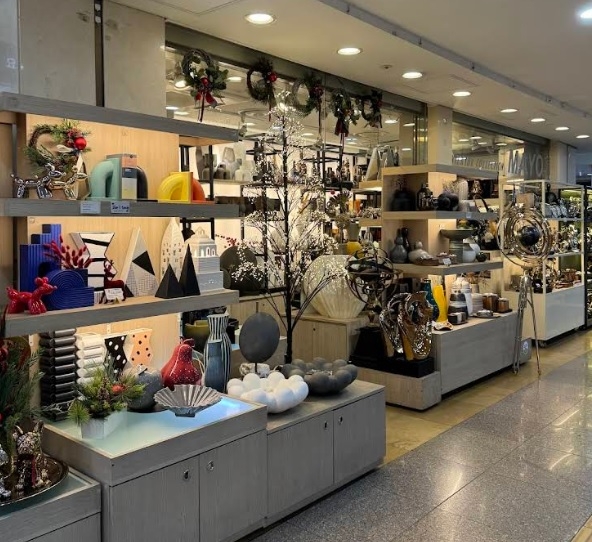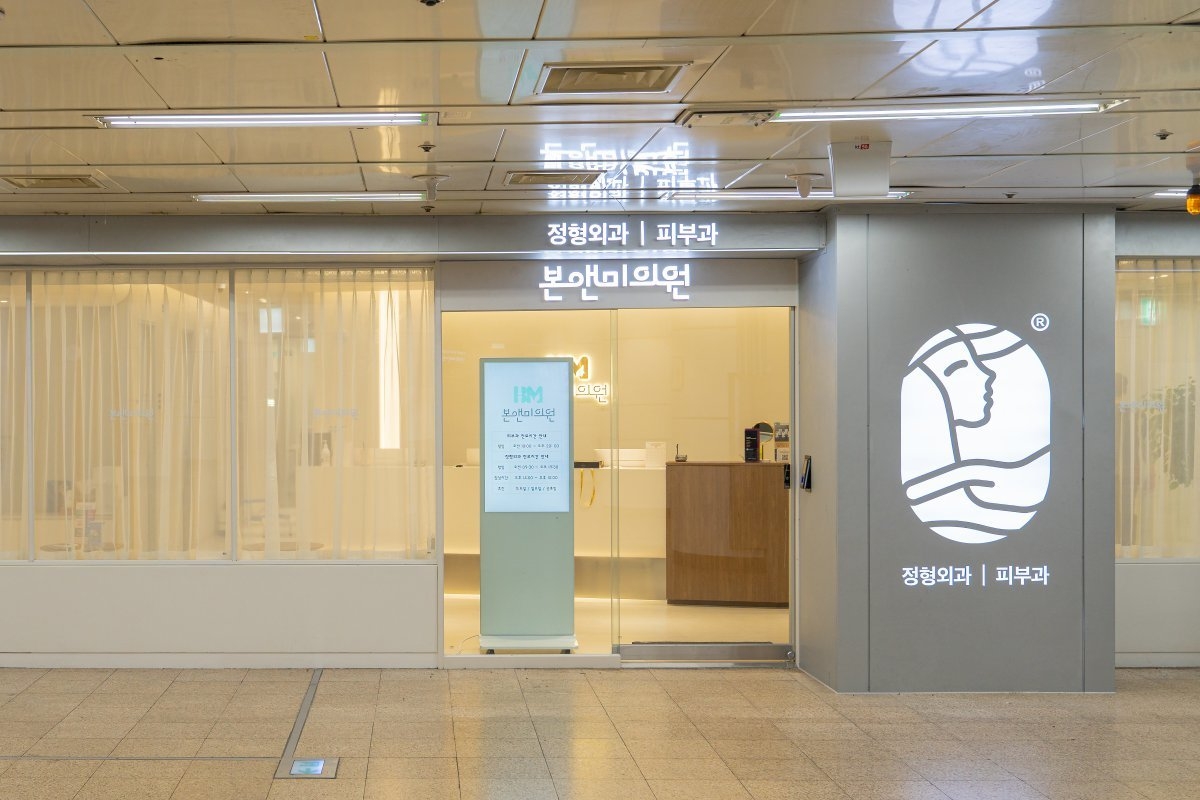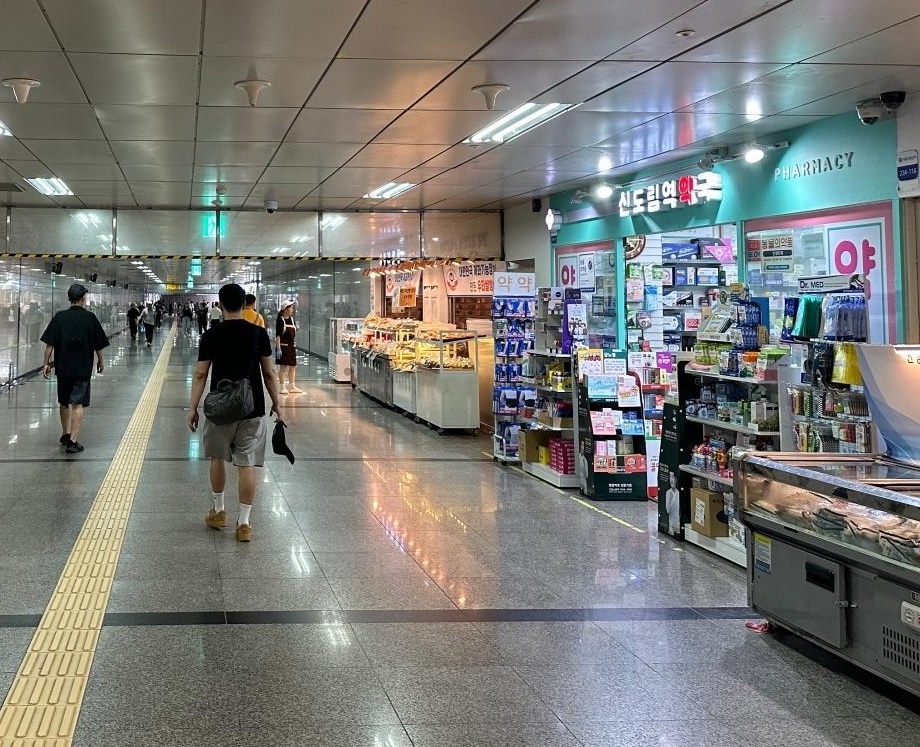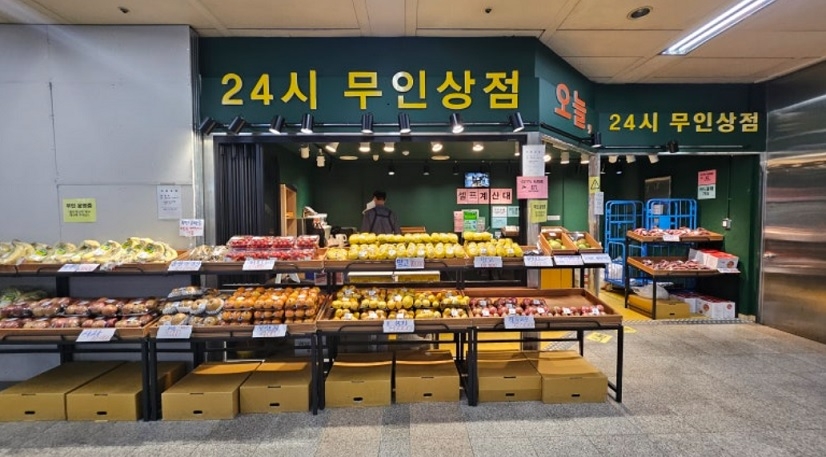May 6, 2025
SEOUL – Beneath Express Bus Terminal Station, a major transfer hub for Seoul Subway Lines 3, 7 and 9, a massive labyrinth of underground shops unfolds, rivaling the scale of a department store.
Known as GOTO Mall, this 880-meter-long underground shopping center, which begins at Exit 8-1, houses around 630 stores and is recognized as one of Seoul’s three largest underground malls, alongside those at Gangnam and Jamsil Stations.
The underground mall offers a wide selection of goods, from clothing and shoes to home decor items and flowers, making it a go-to destination for shoppers. Its vast selection and affordable prices have turned it into a popular hotspot for foreign tourists as well.
Rachel Chua, 27, a tourist from Malaysia who always shops for cosmetics and accessories when visiting Korea, said, “I like how easy it is to move from one shopping mall to another just by taking the subway.”
“Malaysia has underground spaces attached to malls or supermarkets, but not full-scale shopping towns beneath subway stations like in Seoul,” she said.

A home decor vendor inside GOTO Mall. PHOTO: NAVER BLOG/THE KOREA HERALD
City under the city
Beyond shopping, Seoul’s vast underground network has evolved into a vital part of daily life for city dwellers.
At many major subway stations across the capital, commuters can grab a meal, shop for groceries or even visit a clinic — without ever stepping above ground. Franchise restaurants and cafes are a common sight, often equipped with standing tables to accommodate the fast-paced lifestyle of Seoulites in transit.
Eight stations, including Jongno 3-ga, Yeoksam and Hapjeong, host medical clinics offering services from internal medicine to dermatology, alongside pharmacies.
Fruit vendors also populate key locations near ticket gates and transfer stairways at stations like Hapjeong, Seongsu, Sadang and Bangbae, serving office workers and other individuals on the move.

An orthopedic clinic located inside Yeoksam Station in Seoul. PHOTO: SEOUL METRO/THE KOREA HERALD

A pharmacy located inside Sindorim Station in Seoul. PHOTO: SEOUL METRO/THE KOREA HERALD

A staffless fruit store located inside Gongdeok Station in Seoul. PHOTO: THE KOREA HERALD
The rise of uncrewed retail is also witnessed underground, as a growing number of such stores have been filling underground spaces. Ten stations, including Soongsil University, Eungam and Myeongil, have 24-hour uncrewed pet supply shops, while nine stations, including Sinyongsan and Sangsu, host staffless print shops for document services.
According to Seoul Metro, the number of uncrewed stores inside the city’s subway stations generally increased over time, rising from 15 in 2022 to 28 in 2023, with a slight dip to 27 as of September last year.
Seoul’s underground commercial spaces trace back to the rapid urbanization of the 1970s and 1980s.
With soaring land prices and limited surface area, city planners and developers began turning to underground spaces to meet commercial demand.
“In other major global cities like Tokyo, New York and London, underground spaces were initially developed to improve transit connectivity or serve as emergency shelters,” said Cho Won-chul, professor emeritus of civil engineering at Yonsei University. “In contrast, Seoul prioritized commercial development to keep pace with its economic boom.”
Today, these underground malls have become a critical revenue stream for financially struggling transit operators.
In a city of daily commuters, bus and subway fare hikes are politically sensitive, often viewed by the public much like tax increases. As such, Seoul Metro, which operates the city’s majority of subway lines, has been increasingly turning to commercial development within its stations to offset its mounting deficits, leasing retail space to vendors, he added.
The subway operator recorded a net loss of 724.1 billion won ($536.4 million) at the end of last year, a nearly 40 percent jump from 517.3 billion won in 2022.
Sinkholes, ground safety concerns
While underground retail helps revitalize the local economy and offer added convenience for consumers, they also come with growing concerns over ground stability, according to Kim Jae-gwan, professor of urban engineering at the University of Seoul.
“When many commercial facilities are built inside subway stations, they significantly increase the overall structural load placed on the ground below. This added weight can put extra stress on the underlying soil, particularly in areas with soft ground or high groundwater levels,” Kim explained.
“At the same time, they can disrupt the natural flow of groundwater, which could lead to uneven soil conditions, drying out some areas while saturating others. This ultimately weakens the stability of the ground.”
He also noted that building underground facilities often requires changing or expanding existing structures, which can interfere with the natural flow of groundwater.
When this happens, groundwater may be blocked or begin to accumulate in certain areas. Then some parts of the soil can become overly dry, while others may become overly saturated. This kind of imbalance can weaken the ground over time, the professor added.
Concerns about ground stability heightened recently in major cities after a series of sinkhole incidents.
On March 24, a motorist was swallowed by a major sinkhole measuring 20 meters wide and 18 meters deep that opened suddenly at an intersection near an elementary school in Gangdong-gu, eastern Seoul. He was later found dead.
Another large sinkhole measuring 5 meters wide and 4.5 meters deep opened up under a pedestrian crossing near a subway construction site in Sasang-gu, Busan on April 14. No injuries were reported.
While there is no direct evidence linking the development of underground facilities to sinkholes, poor management during construction can contribute to their formation, said professor Park Chang-geun of the civil engineering department at Catholic Kwandong University.
“Sinkholes are primarily caused by faulty construction practices, such as improper excavation, inadequate soil stabilization or poor backfilling,” Park said. Backfilling refers to the process of refilling an excavated area with soil, sand, gravel or other materials to prevent ground collapse.
“In a country with limited land, the development of underground commercial facilities is not only an efficient but also an inevitable solution. Still, without careful management during construction, the risk of ground instability remains a serious concern.”


